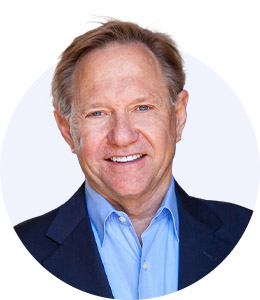In my book The Busy Leader’s Handbook, Chapter 1 is on self-awareness and coachability. Self-awareness is one’s ability to perceive and understand the characteristics that make them who they are as an individual: personality, actions, values, beliefs, emotions, and thoughts. The greater self-awareness a person has, the more coachable they are. In the book, I provide tips on how to gain self-awareness and become more coachable.
My experience is that a key characteristic the best performers have is curiosity—including about oneself. Organizations that take time to provide ways for individuals to learn are the special ones. There are many tools for gaining self-awareness: feedback from customers or users, employee engagement measurement, and data such as employee turnover (when people are leaving, what areas they’re leaving from, and what they’re saying in exit interviews).
Gathering a variety of data points helps one recognize their blind spots. The Johari Window model uses a quadrant approach. One of the quadrants is called the “blind self” or “blind spot.” It contains information about a person that they are unaware of but that others recognize. The message is that others interpret us differently from how we see ourselves. Our blind spot is reduced by being open to feedback received.
I am a believer in using various methods to gain self-awareness. There is no one-size-fits-all. I learned from Marcia Horn, president and CEO of a not-for-profit organization called ICAN, that in treating cancer, every patient is unique. Everyone is an individual. In statistical terms, everyone is an N of 1. I find the N=1 approach works for many things, including helping people gain self-awareness.
None of this means the process of gaining self-awareness is enjoyable. It does mean the feedback received is helpful. It also does not mean the feedback is not positive. Feedback is often very good. What I know for sure is the healthiest cultures are feedback-rich ones. They are also the ones where self-awareness is prioritized.
In addition to external measures, there are what I term internal ones. These are surveys a person completes and receives feedback on. Most often I see organizations use the Myers-Briggs and DiSC assessments. Another one is Management By Strengths, or MBS. I was introduced to the MBS years ago and have used it ever since. The MBS helps a person see their “go-to” traits: Directness, Extroversion, Pace, and Structure. We all have all four of these traits; the MBS lets us know the dominant ones. It is also used to match a person’s MBS to those they work with. It helps individuals determine the best way to work together.
As Jim Collins wrote in the book Good to Great, it is important to get people in the right seat on the bus. Self-awareness helps the person choose the right seat. Knowing people well helps an organization place people in roles that play to their strengths. It also helps a department avoid getting so heavy with people who have the same dominant trait that things don’t get done at all, or done to the level needed.
All traits bring with them strengths and weaknesses. For example, the MBS data shows that a person is Direct. This means they like to move quickly, and believe they have the best way to move. This can be a good thing. However, they may move too quickly, and they may not be open to input. The Extrovert is people-oriented. This is a good quality. However, it may also lead to not making tough decisions. The Pace person likes an even pace. They are a good work planner. However, at times, faster movement than they prefer may be needed. The Structure person likes to make sure a detailed plan is in place. While this is beneficial in many ways, they may focus so much on the structure that it gets too complex.
A good company or department figures out what traits their area needs. Usually, it is a combination of all four. However, it may not be balanced. Some areas will do better with more people of the same trait and fewer people with other traits. However, if a single trait is too dominant, it can be a disaster. As with any championship team, knowing the talent and putting people in the right spot is critical.
I was in a meeting with a department. All members were very bright. All were very passionate. All were committed to the organization’s purpose. After spending time with the group, I talked with the person who the leader of the department reported to. My feedback was that only one person seemed to be outcomes-focused. The others were all process-oriented. Again, process is good, to a point.
My analogy is they are paint stirrers. However, they are slow to paint and will make the job more complex than it needs to be. This does not mean they are not working hard. They are, and their role is needed. When getting ready to paint a wall, it is vital to stir the paint, but if you don’t put the brush in the paint, nothing gets done. Or if the set up to paint takes too long, the paint will need more stirring and time is lost.
In any work area, if each person is not aware of the others’ traits, they can misread their intent. For example, as a Direct person, I may want to move quickly. The Extrovert is focused on how that will impact the people. The Pace person is thinking timelines. The Structure person is focused on how to organize the project. They may assume I’m being insensitive to their needs and perspectives, while I am actually thinking if we spend too much time on process and structure, we can lose opportunities. It helps so much for all parties to understand where others are coming from.
A few tips:
- Invest in tools to help people gain a good self-awareness. This helps in so many areas: hiring, onboarding, teamwork, development, and more.
- Use the tools (and keep using them). My experience is that an organization introduces the tool and there is good energy at first. But the tool is not used as well as it can be. For example, new people are not provided the tool. In a recent meeting, an organization shared that all the leaders had taken the DiSC. I suggested they use that information. It came up that since the rollout of the DiSC some time back, new leaders have not taken it. Then it was shared that since the DiSC was provided so long ago, leaders would need to be updated on how to use it. This is an example of sizzle and fizzle. Integrate the use of the tool into daily practice.
- Assess the makeup of the team. Is it diverse enough to turn the dial and achieve the needed results? If not, it may be time to make some changes.
- Be careful with selection of talent. Too often a new employee has the same trait as their leader. We like to hire like-minded people.
- Educate each person on the traits of the people they will work with and for. My dominant trait is Directness. That means when someone meets with me, they are encouraged to get to the point quickly. I also need to own how I communicate with the person who is meeting with me. If they are Pace-oriented, I know the timeline is vital, so we need to cover that during the meeting (including taking the time to provide a timeline).
- Do all you can to eliminate and reduce the blind spots. In The Busy Leader’s Handbook, I share items that block self-awareness. For example, A person shared with me they are losing people for all sorts of reasons. What they missed was their role in the departures. Envy is another common roadblock. This is why other people’s feedback is vital.
Self-awareness changes a lot. So does getting intentional about understanding others. The more we know about ourselves and the traits of our coworkers, the more we’ll be able to grow and improve, the better our relationships will be, the more productively we’ll work together, the stronger our culture will become, and the more our organization will thrive.

